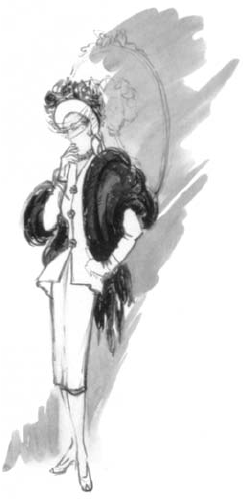A Costume Problem
From Shop to Stage to Screen
Edith Head
One of the many myths of Hollywood is that the screen exaggerates all women's costumes. This has been true in some pictures—and still is. Not so many years ago one of our leading studios put its actresses into dresses of almost unimaginable extravagance. But the trend today is away from eccentricity of line and color, flounce and peplum, ruffle and jabot. Exaggeration of reality, which is necessary on the stage because of the distance that separates the audience and the actress, is absurd in terms of the close shot. The tendency today is to clothe actresses as if they were indeed playing characters and not themselves, and yet to be conscious of the points of design which agree with the physique and personality of the player. The Hollywood Quarterly has asked a designer who is particularly successful in this—Edith Head, of Paramount—to explain in her own words and her own pictures just how a basic dress develops from the reality of life into the costumes of characters played by actresses. In order that the characterization in each dress may be emphasized, Miss Head has not sketched in the face of each different actress, but has given them all the same fashion-plate visage.
THE EDITORS
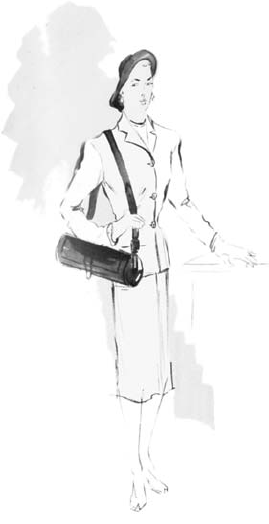
A typical suit which could be bought in a store. This suit was not selected with any idea of its being photographed, or any attempt to bring out any characteristics in the wearer. It is a very average suit, and can be worn by the average woman.
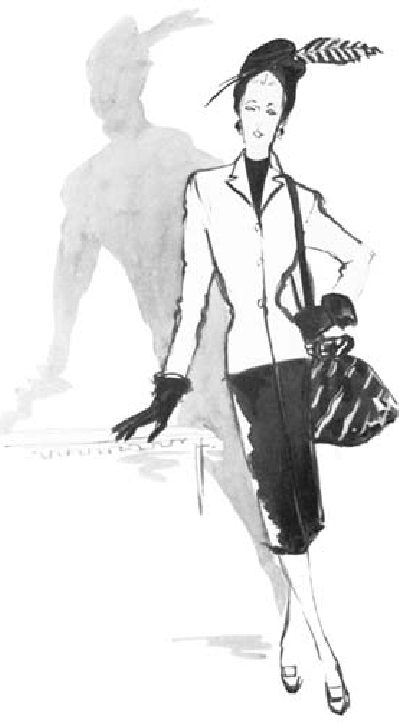
A stage version of the same suit, using color contrast. The suit accessories are more stylized. However, this suit could still be worn by the average woman.
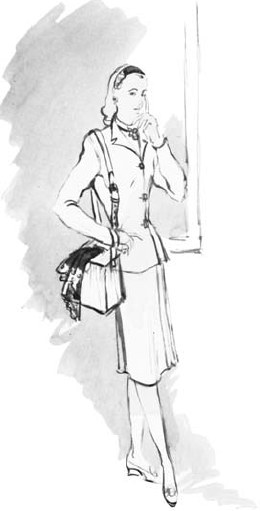
For Barbara Stanwyck in Cry Wolf! A very simple version of the original suit. She plays a young geologist, so the suit must be professional-looking. Note use of a headband, since Miss Stanwyck avoids hats as much as possible.
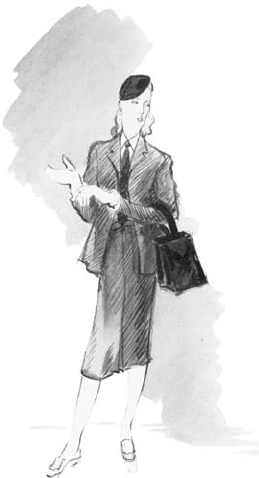
For Veronica Lake in The Blue Dahlia. Simple, boyish, and "tweedy," to counteract the feminine, little-girl look. Beret and boy's tie are particularly good with Miss Lake's long hair and slender neck.
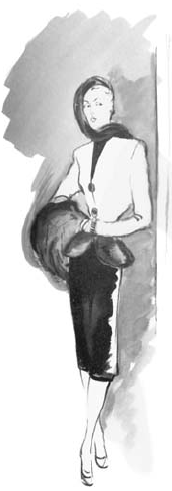
For Joan Fontaine in The Affairs of Susan. In this sequence, Miss Fontaine is supposed to look very smart, with a young sophistication. The fur peplum and muff are for smartness, and the stocking cap to keep her from looking too grown up. Dark cap to accentuate her blond hair. Light coat because the character is shot at in a park at dusk.
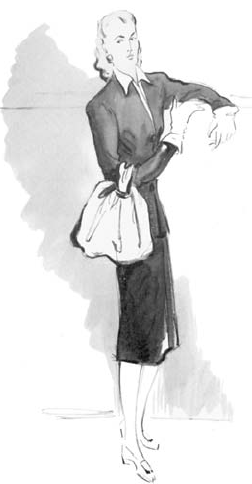
For Ingrid Bergman in The Arch of Triumph. Dark to emphasize her coloring. Simple in line and detail for character. This suit must be as nondescript as possible because of the nature of the story. The white collar is necessary for close-ups.
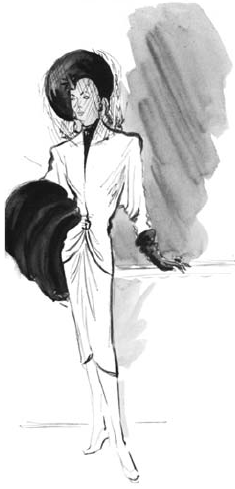
For Dorothy Lamour in My Favorite Wife. Light color to emphasize Miss Lamour's dark type. Hat and muff also emphasize the glamour of the character, mysterious and alluring. The draping of coat and skirt keep the suit from a too tailored look.
